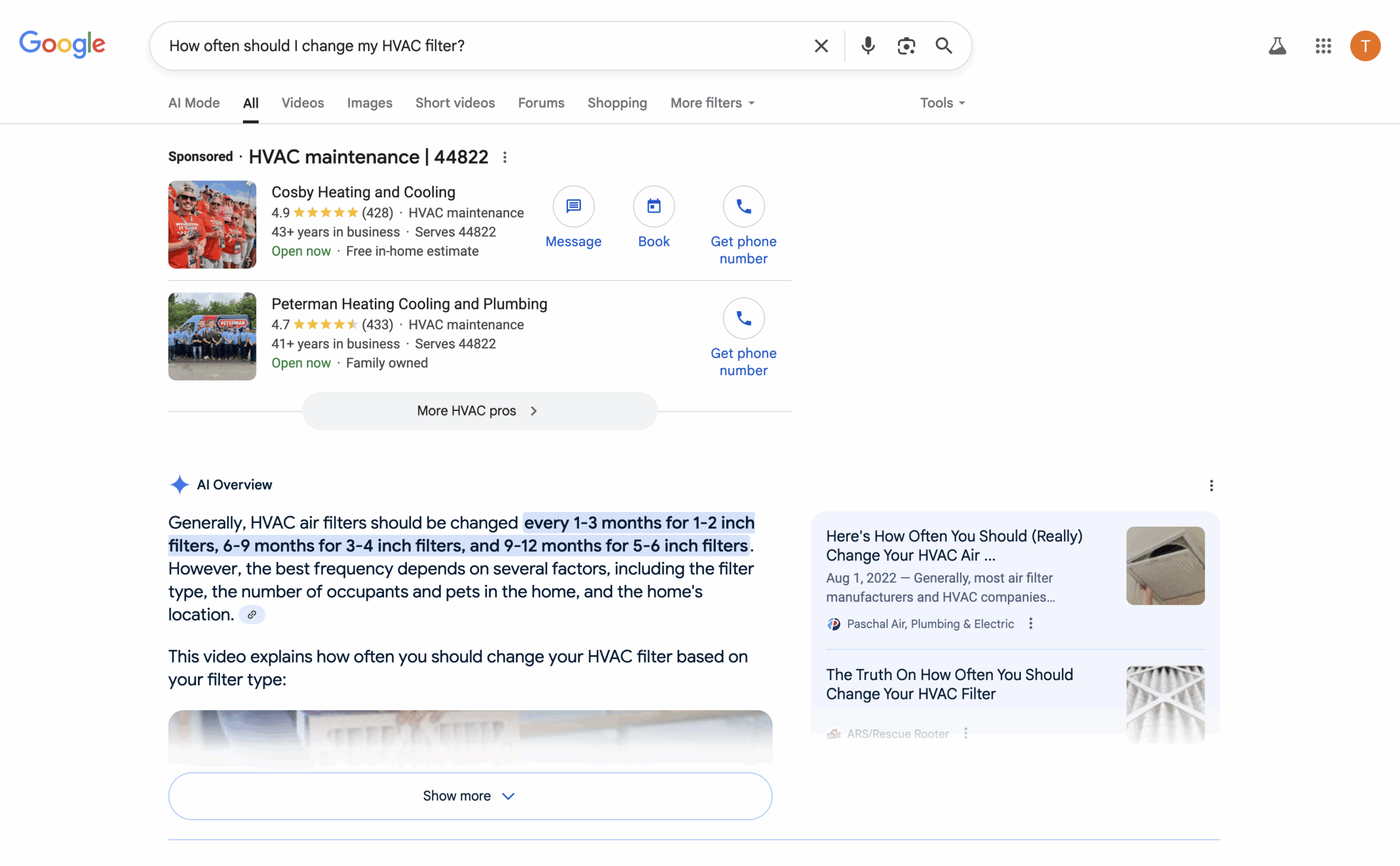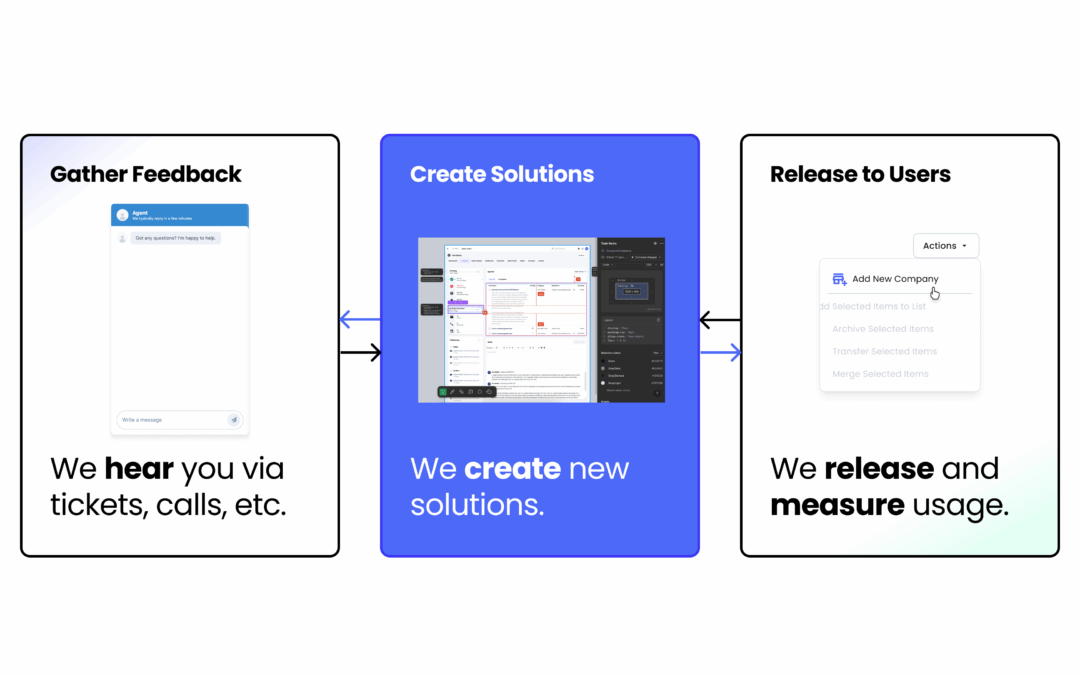
Many recent studies show that search click‑through rates continue to trend downward. A 15% average of click-through rates brands used to see has vanished into on-page answers generated by the AI tools search that companies like Google and Microsoft have been implementing. These are the quick summaries at the top of your Google search results that provide you with a quick answer to your query. People are still searching; they are most likely getting what they need before they ever hit your customer’s website. No visit, no pixel, no credit. We call these zero-click searches.
If you’re building digital strategies for advertisers, that stings. You’re selling performance and proof. When AI eats the click, visibility fades and attribution gets fuzzy, making reports look soft and budgets possibly feeling shaky.
We’ve been testing how AI tries to surface and describe brands of all sizes while building data enrichment directly into ShareBuilders CRM. Below are a few practical steps your digital team can use to keep advertisers visible and relevant through this next shift in search.
What this means for your reporting & attribution
Advertisers can expect fewer organic visits to their reporting tools and more “Direct/Unknown” spikes, so connecting campaigns to impressions will become more challenging. Your digital services teams need to build advertiser-facing strategies that keep their brands visible in AI-driven results and keep the attribution and impression story clean.
Digital strategies to help advertisers stay relevant in AI search
Speak in questions & answers
Turn your most‑searched topics into tight FAQs and step‑by‑step guides, then mark them up with FAQPage or HowTo structured data so Google can surface rich results and AI answers cite you accurately. Think one clear question, one crisp answer, then the depth below that if needed. This gives AI something accurate to quote and a reason for users to click when they need more information.
Lock in a one-line brand descriptor
Write a 5–7‑word line that nails who you are and then paste it verbatim in schema markup, your Google Business Profile, and every social bio (“Automated compliance for healthcare providers”). Help guide advertisers to use it exactly the same everywhere, such as their schema, bios, partner pages, and socials. Consistency helps models recall and repeat advertisers correctly.
Brand unique processes
Coin a memorable label for your advertisers method like “The Acme Comfort Assurance Method”. Encourage them to use it on their website, white papers, downloadable content, videos, sales decks. When models repeat it back unprompted, you’ve stuck in their memory.
Build click-worthy tools
AI Chatbots can summarize copy, but they can’t run a mortgage calculator, ROI estimator, or quiz. Interactive tools that need real input force people to visit. They should generate shareable, indexable URLs so that when users pass the result around, search models can crawl, attribute, and pass link equity back to the site. This will also give you a perfect moment to capture email or intent. Log every interaction server‑side (GA4 Measurement Protocol or GTM Server) so conversions still flow even when browsers block client‑side scripts.
Fix the Attribution Gap
Don’t let AI-related search traffic drown in the “Direct/Unknown” bucket. Pair your “AI / Zero‑Click Assist” channel with server‑side cookie stitching (or Enhanced Conversions/CAPI) so conversions stay tied to the right session, future‑proofing your data.

- Create an “AI / Zero‑Click Assist” channel in your analytics solution and route in sessions that look AI-origin (direct hits to FAQs/tools, AI referrers, UTMs like utm_medium=ai_answer).
- Tag everything you control, such as PDFs, widgets, and QR codes with consistent UTMs. Have your digital team use server-side tagging to hang on to stripped parameters.
- Ask people how they found you on key forms with new answers like “Saw answer in AI summary”, or “Perplexity”. Simple, but it works.
- Spot-check AI mentions on a regular basis. Save 10–20 brand/category prompts, run them through major AIs, log if and how you’re cited. Treat it like impression share.
Pro tip: Use ChatGPT scheduled tasks to automate this work for you.
https://help.openai.com/en/articles/10291617-tasks-in-chatgpt
Go even further
Want to go further? Create a machine‑readable brand sheet (a simple JSON file like /brand.json) that includes a one‑line descriptor, 50‑word summary, differentiators, FAQs, comparison points, and preferred citation text/URL. Expose any high‑value facts (rates, locations, inventory) through fast JSON endpoints on the edge (think /api/faq.json, pre‑cached to respond in <50 ms) so models can grab fresh data without timing out.

